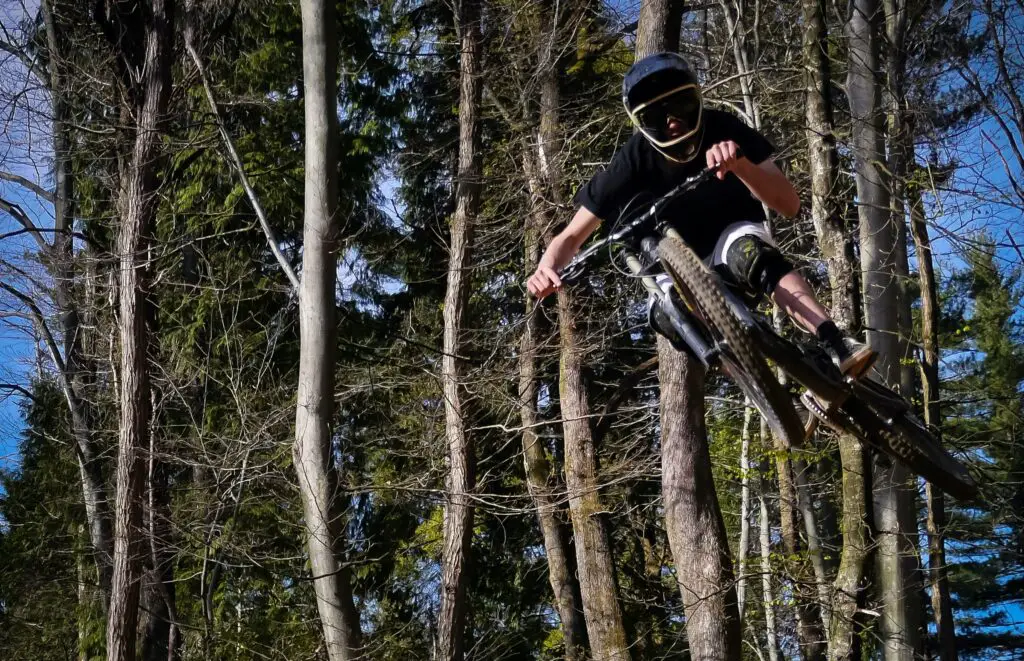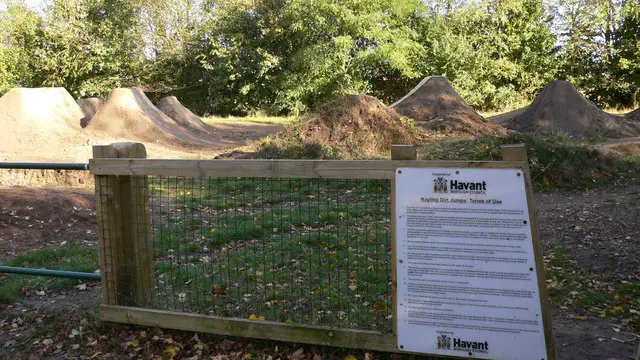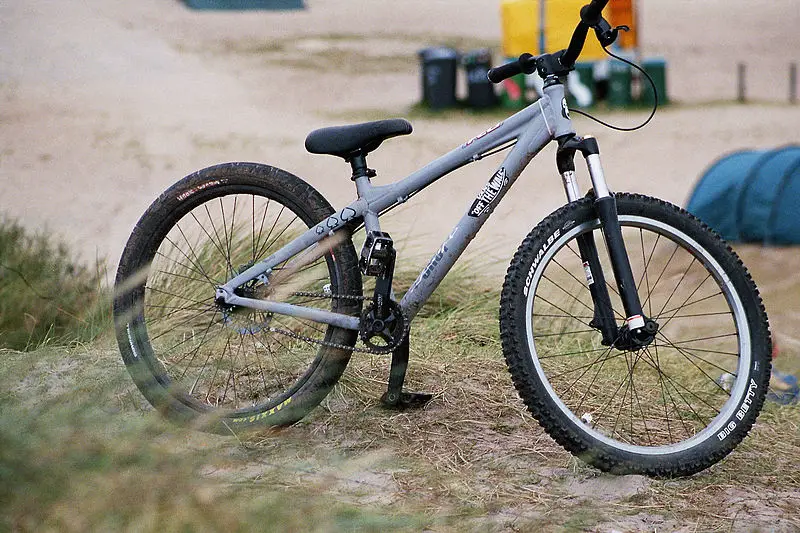Downhill bikes are specialist machines made for a single purpose – to travel downhill as fast as possible. But are they a good choice of bike for jumping?
There are different kinds of jumps in mountain biking, with very different requirements in terms of bike setup.
Here we’ll look at when a downhill bike could be the best option for jumping, as well those times the downhill bike is best off being left in the garage.
Here’s what you should know about Jumping on a Downhill Bike:
Downhill bikes are designed to tackle jumps typically encountered on trails. With a long enough run-up and sufficient speed, trail jumps will be no problem for a downhill bike. They aren’t well suited to dirt jumps as they lose energy through unwanted suspension compression on steep take-offs.

What Makes Downhill Bikes Good or Bad for Jumping
Before we can say whether or not a DH bike is good for jumping, we need to distinguish between the two main types of MTB jumps.
There are the jumps you find on a trail, then there are the jump sets you’d encounter at a dirt jump track. The nature of these two types of jumps is very different, which means the ideal bike for each jump is also different.
Let’s take a look at each type of jump individually and evaluate how suitable downhill bikes are for each.
Can Downhill Bikes be Used for Jumps on Trails?
Whilst trails can vary considerably from a novice blue rating through to pro lines, the jumps encountered on trail rides are similar, broadly speaking.
It’s true that the first small tabletop you hit as a novice is worlds apart from the massive jumps in pro downhill runs but they typically share these features in common:
- They are located on descending sections of the trail, with a long and steep enough run-up to allow sufficient speed to be built up in order to clear them.
- The face of the jump, or take-off, isn’t crazy steep. At least not when compared to dirt jumps as we’ll discuss later on.
- The trails on which you encounter this type of jump typically (although not always) include other features, from rock gardens and drop-offs to berms.
This is a great example of what a trail type jump would look like:

When taking off from trail-type jumps, the relatively shallow angle of the jump means the rider is propelled horizontally more than vertically, and most of the forward momentum is maintained.
The landings on this type of jump vary considerably, so a sturdy full suspension bike with a decent amount of travel is usually preferred to ensure a smooth landing.
Downhill bikes are the sturdiest full suspension bikes available, with more suspension travel than any other MTB This makes them perfect for jumping on trails.
Or at least this is true 99% of the time. For the very smallest jumps hit at low speed, like the ones you’d find on a beginner’s trail, the weight of a DH bike could be a limiting factor.
Downhill bikes are very heavy, which makes them a bit harder to get over those smaller, slower jumps.
(We actually wrote an article explaining why downhill bikes are so much heavier than other mountain bikes. You can read it here if you’re interested)
Most of the time, however, the weight of a downhill bike isn’t an issue at all for jumping on trails. In fact, downhill racing features some huge jumps and drop-offs, so DH bikes are actually designed to be able to jump well.
Can a Downhill Bike be used for Dirt Jumps?
Dirt jumps are entirely different from those encountered on trails.
First off, the only feature of a dirt jump track is… you guessed it, dirt jumps. There are no rock gardens, drop-offs, climbs, etc. Just jump after jump that flow into one another.
The jumps themselves are steep. Much steeper than the ones typically found on trails. Here’s an example of what a dirt jump looks like:

The much steeper face of dirt jumps means that the rider is propelled vertically more than horizontally after take-off. Speed is then maintained by hitting the steep landing, giving enough momentum to clear the next jump.
Downhill bikes are not suited to this type of jump for a few reasons.
The main reason is that they have way more suspension than a dirt jumper – the bikes designed specifically to tackle this type of jump track.
Dirt jump bikes are like beefed-up BMXs with front suspension, typically with 80mm – 100mm of travel in the forks, compared with 200mm of travel front and rear on a DH bike.

Whilst beneficial for trails, all the suspension on a DH bike causes problems on a dirt jump track when hitting the steep take-offs. When the jump is hit, the suspension compresses and takes a lot of momentum out of the bike.
The energy wasted in compressing the suspension of a DH bike would instead be used to propel the rider and the bike up the face of the jump if riding with a dirt jumper.
Another drawback is that downhill bikes are heavy. A DH bike will normally weigh in the 35 – 40 lbs region, whilst a dirt jumper weighs between 22 – 26 lbs.
More weight in a steep dirt jump means less time in the air to line up for a clean landing.
All this additional weight combined with the loss of energy due to compression of the suspension on a DH bike makes them a poor choice for dirt jumps.
That’s not to say it’s impossible to ride a dirt jump track on a downhill bike, but it’s much harder and should only be attempted by experienced riders who are very comfortable with their bikes.
